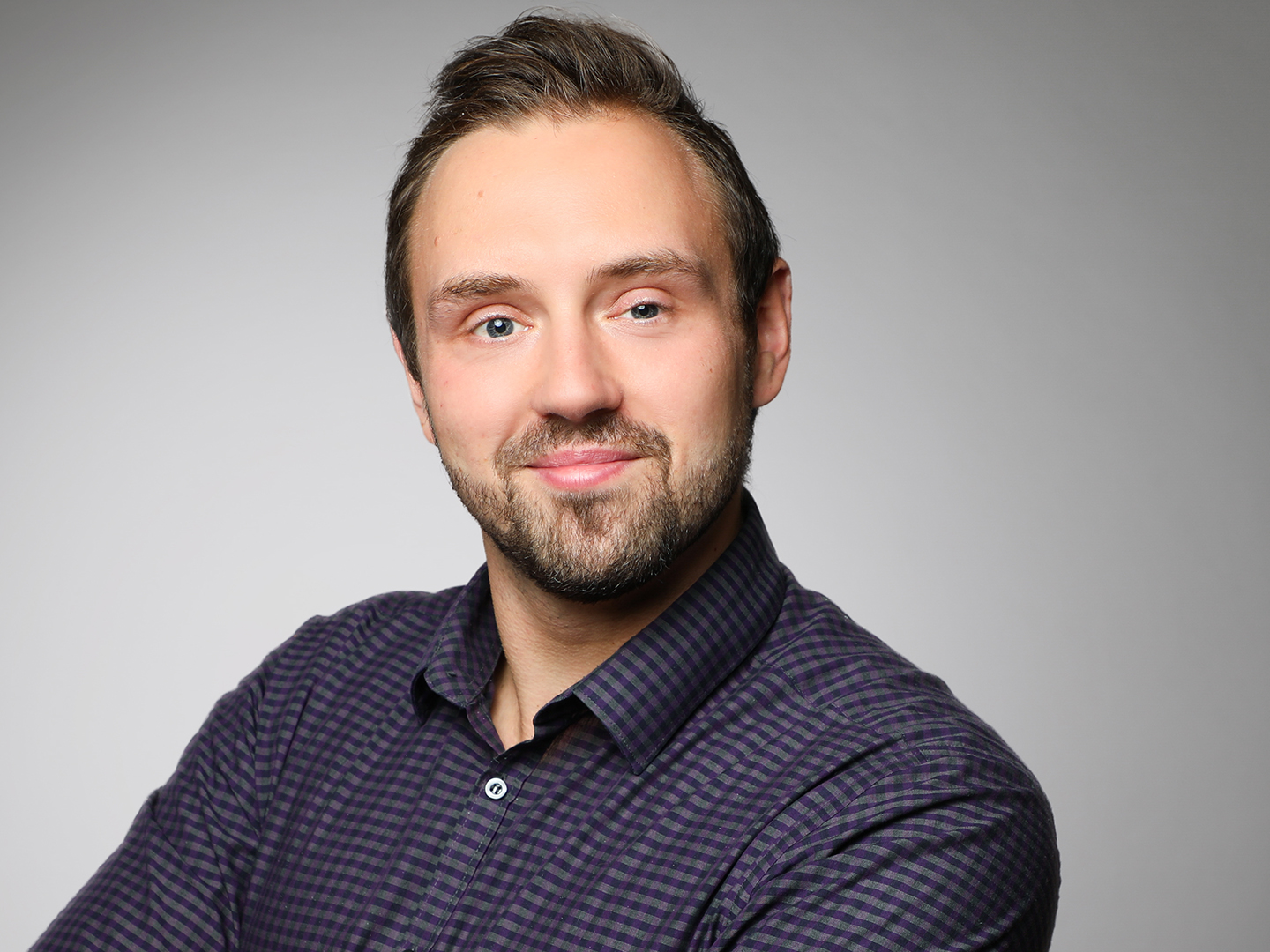... Dr. Tim Nitsche from Fraunhofer UMSICHT
Interview of 14.09.2023

As a research associate with two facilities at two different sites, from this perspective, what has been accomplished so far in the Carbon2Chem® joint project?
Carbon2Chem® laboratory, Oberhausen site, phase I
We established the plasma technology of dielectric barrier discharge (DBE) at Fraunhofer UMSICHT during the first phase of Carbon2Chem® and successfully applied a new application, the removal of trace oxygen from coke oven gas, thus demonstrating the feasibility of this technology. In the process, we were also able to gain a better understanding of the plasma-chemical reactions taking place and identify essential influencing variables for the implementation.
Carbon2Chem® technical center, Duisburg site, phase II
Within the framework of the second phase, it was possible to build on the experience gained in the first phase. On the one hand, an improved version of the plasma reactor was set up at Fraunhofer UMSICHT, with which the plasma can generally be distributed more evenly, and thus reproducibly higher cleaning performance can be achieved. This is currently being investigated for in-depth studies on the influence of the reactor design as well as gas composition and pressure. On the other hand, a test plant for volume flows of up to 10 Nm³/h has been set up together with the Ruhr University Bochum at the Carbon2Chem® technical center in Duisburg and has already been successfully put into operation with a highly scaled surface DBE reactor from the Ruhr University Bochum. Both model gas mixtures and the coke oven gas generated in the steel mill at thyssenkrupp Steel Europe at flows are being investigated in the plant and initial parameter ranges for advantageous removal of high gas volume flows have already been identified for the plasma reactor.
What were highlights?
Carbon2Chem® laboratory, Oberhausen site, phase I
The first highlight was the commissioning of the experimental plant including the plasma reactor, which went almost without a hitch thanks to thorough preparation with the team available for this construction project. After that, we were also able to quickly register the first successful sales and demonstrate that non-thermal plasma can be used to drive oxygen very specifically from coke oven gas.
Carbon2Chem® technical center, Duisburg site, phase II
Even though I already had more experience with experimental plants and plasma reactors in the second phase, the commissioning of the experimental plant at the Carbon2Chem® technical center in Duisburg was also a highlight that we worked well towards. Thanks to the good cooperation of the Ruhr University in Bochum, we were also able to set up an appropriate reaction system here as planned and gradually treat ever higher gas volumes with the plasma reactor.
What were the biggest challenges?
Carbon2Chem® laboratory, Oberhausen site, Phase I
Although we were able to start up the experimental plant with the plasma reactor in a short time and achieve the first successful purifications of our model gas mixture, the continuous operation of the reactor was still associated with some difficulties. If the power input of the plasma was too high, there was a breakdown in the glass, which meant that we were unable to approach certain parameter ranges. After technical consultation with the staff at Fraunhofer UMSICHT, we were able to increase the power input and achieve better implementation by means of an improved reactor version with quartz glass instead of borane glass.
However, the next major challenge was not long in coming - the plasma often does not ignite uniformly in the reactor and does so at different points after each conversion, so that clearly defined test procedures first had to be defined to take this effect into account. In the long run, a new reactor design with a steel jacket was developed, which allowed a much better and reproducible distribution of the plasma.
Carbon2Chem® technical center, Duisburg site, Phase II
During the construction of the test plant in Duisburg, there were also minor new challenges that arose in detail due to the design of the plant for higher volume flows and operation in the Carbon2Chem® technical center, which could nevertheless be solved again quickly. Only the limited availability of certain components with correspondingly long delivery times led to a slight delay in the schedule.
What next steps are planned?
Carbon2Chem® laboratory, Oberhausen site, phase I
Even if the plasma conversion works fundamentally, the plasma-chemical conversion is a rather complex reaction network, which we want to investigate further in detail for optimal use. For example, the coke oven gas still contains many trace substances, the influence of which for plasma conversion is only successively understood. Therefore, we will investigate the influence of some representative trace components of the coke oven gas on the conversion in the plasma in our laboratory facility.
Carbon2Chem® technical center, Duisburg site, phase II
At the Duisburg technical center, we will further investigate plasma conversion in the coke oven gas. To this end, we will also test a scaled-up version of the volume DBD unit we have investigated and built in Duisburg in early 2024.
 Fraunhofer Institute for Environmental, Safety and Energy Technology UMSICHT
Fraunhofer Institute for Environmental, Safety and Energy Technology UMSICHT